Snowshoeing in Colorado: low impact, high reward adventure
Snowshoeing in Colorado gives you a front row seat to the exquisite winter wilderness of the Rocky Mountains without buying a ticket
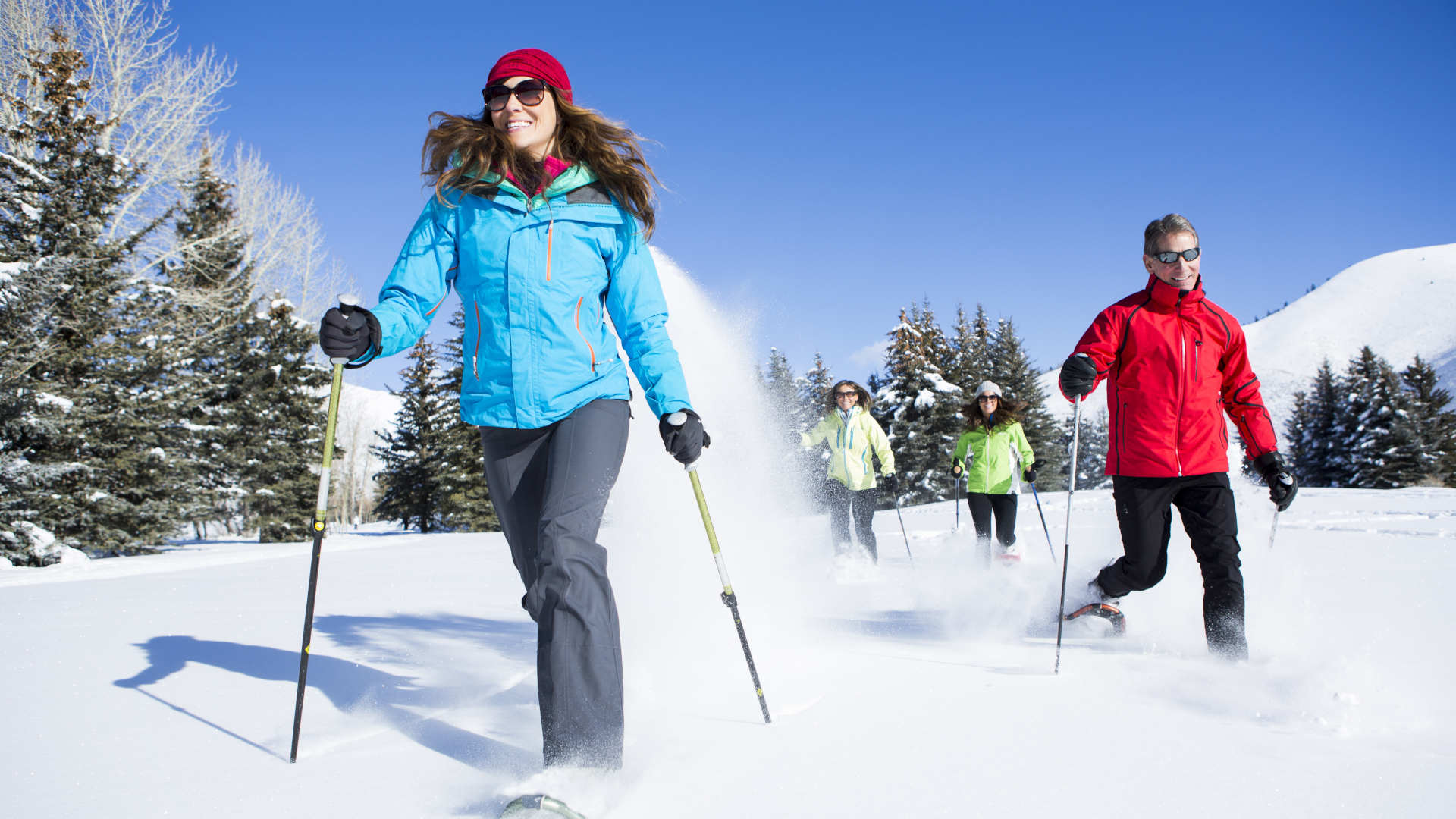
Though it’s best known for being jam packed with some of the world’s finest ski resorts in winter, you don’t need a chairlift to experience the joys of winter in Colorado. Snowshoeing in Colorado makes a great alternative to the high-adrenaline sports of skiing and riding and offers low-risk, low-impact and high-reward adventure, all without the crowds.
Once winter rolls around, most of Colorado’s amazing hiking trails simply become snowshoeing trails, meaning you can continue to explore the backcountry in your hiking boots. Further, there’s a number of beautiful designated snowshoe terrain parks dotted around the state where you can enjoy frosty adventures away from snowmobiles and chairlifts. When it comes to winter sports, snowshoeing is cheaper and more accessible for beginners than any other, and offers great exercise and more solitude than whizzing down groomers.
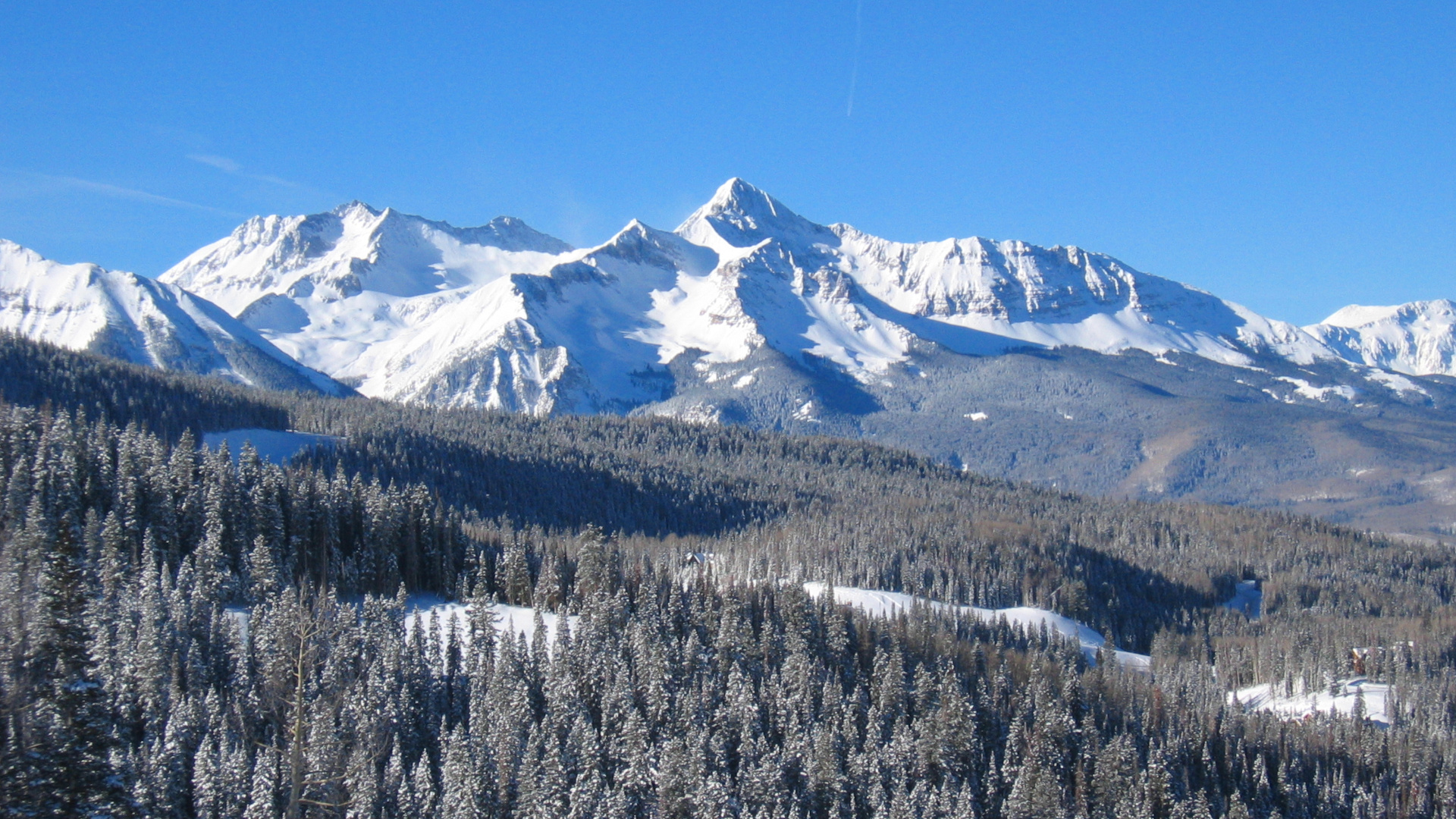
The main thing you need for snowshoeing is deep snow, making every winter a good snowshoeing season in Colorado. The state receives an average of 60 to 100 inches of snowfall annually, including the plains of the Front Range which receive little snow – up in the mountain areas like Aspen that number is closer to 200 inches. One note: for trails where the snow is well packed due to high usage or groomed, you’ll find that snowshoes slow you down and you can move faster and easier wearing Yaktrax or Microspikes.
Once you’ve got snow, all you need is the right clothing, which you’ll already have for spending any time here in winter anyway. You can easily rent snowshoes and poles if you’re visiting, and if you’re buying a pair make sure to check out our guide to how to choose snowshoes.
Finally, though we’ve said snowshoeing is a low risk sport, any time you’re recreating in the backcountry at grades of 30 degrees or steeper, there is an avalanche risk and you’ll want to read our avalanche safety guide before you go.
With all that out of the way, let’s unveil some of our favorite trails and parks for snowshoeing in Colorado.
Backcountry snowshoeing in Colorado
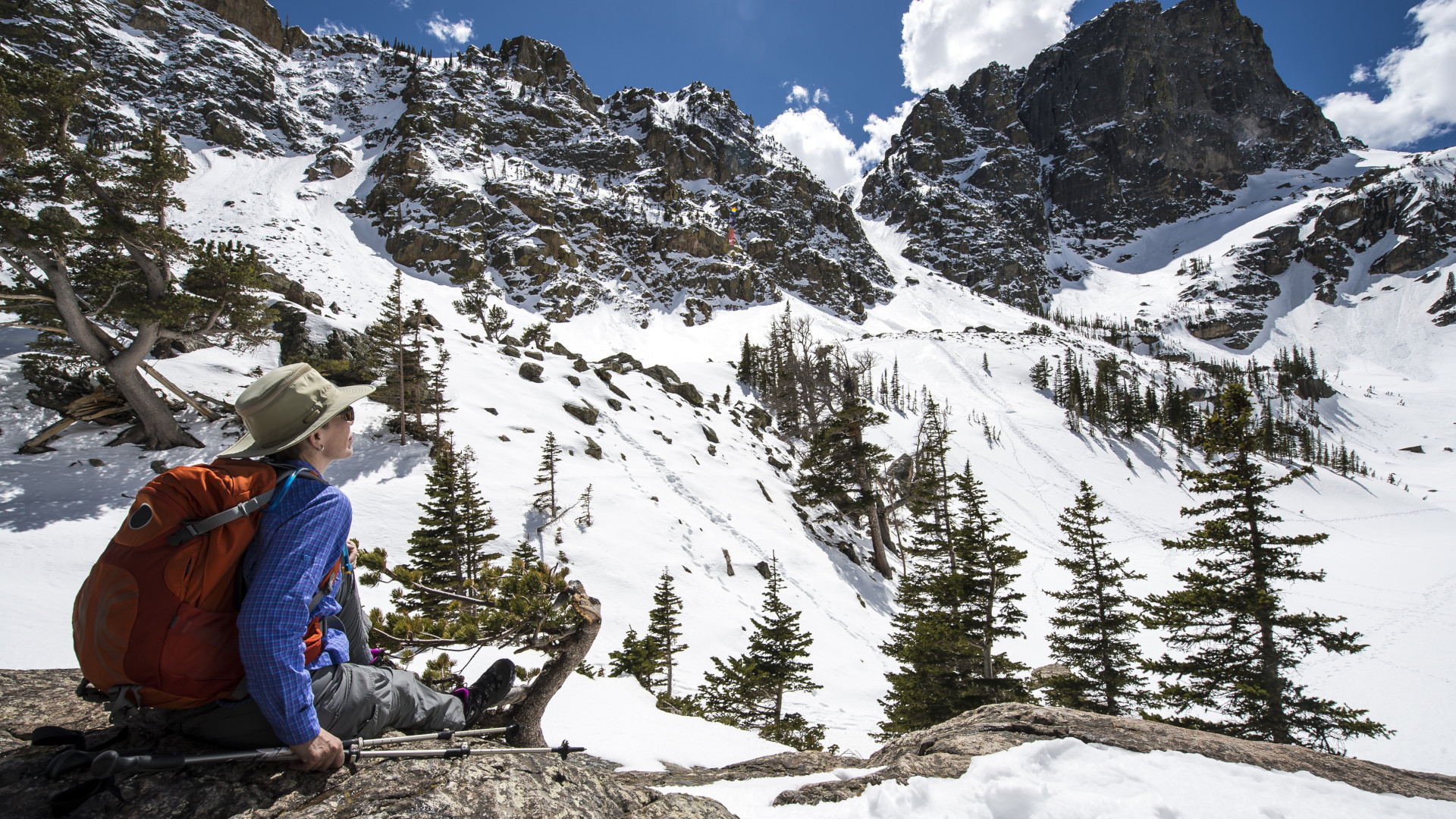
One of the things we love about snowshoeing is how affordable it is compared to other winter sports. Snowshoeing in Colorado gives you a front row seat to the exquisite winter wilderness of the Rocky Mountains without buying a ticket on these backcountry trails.
Advnture Newsletter
All the latest inspiration, tips and guides to help you plan your next Advnture!
Rocky Mountain National Park
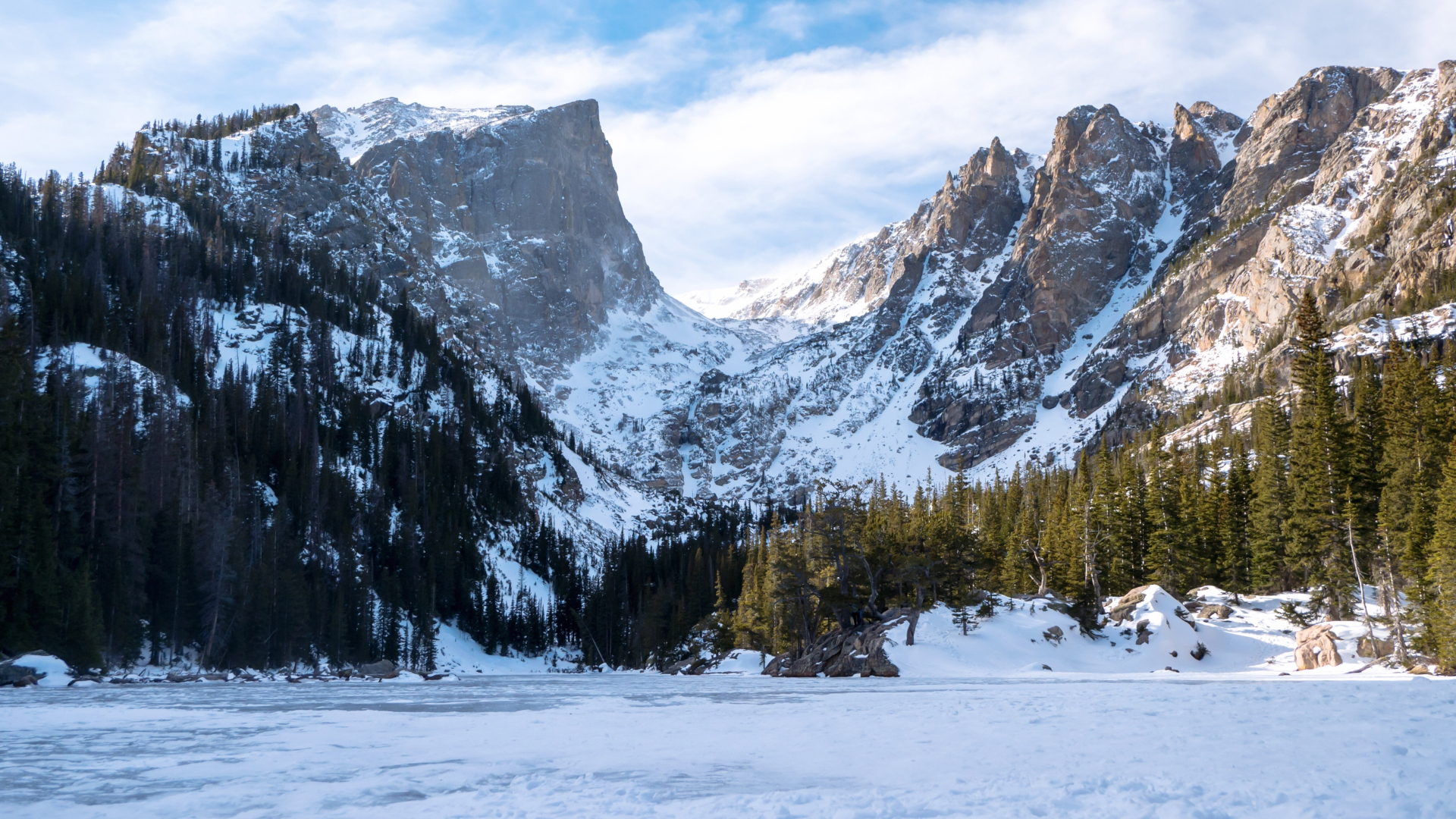
Lots of the best hikes in Rocky Mountain National Park see great snowpack in the winter months, and snowshoeing here is an excellent way to experience the magnificence of this Park without the usual crowds. Home to more than 100 peaks over 11,000ft and only an hour and a half drive from Denver, Colorado’s crown jewel makes sits near the lovely resort town of Estes Park in northern Colorado – where you can rent snowshoes – and its 415 square miles of stunning wilderness that attracts millions of visitors every year for good reason. Many of the best trails make beautiful snowshoeing adventures, including scenic Emerald Lake (3.5 miles), the Loch (5.7 miles) and the famous Trail Ridge Road which runs along the length of the park and as the highest continuous paved road in North America, offers spectacular views.
The Colorado Trail
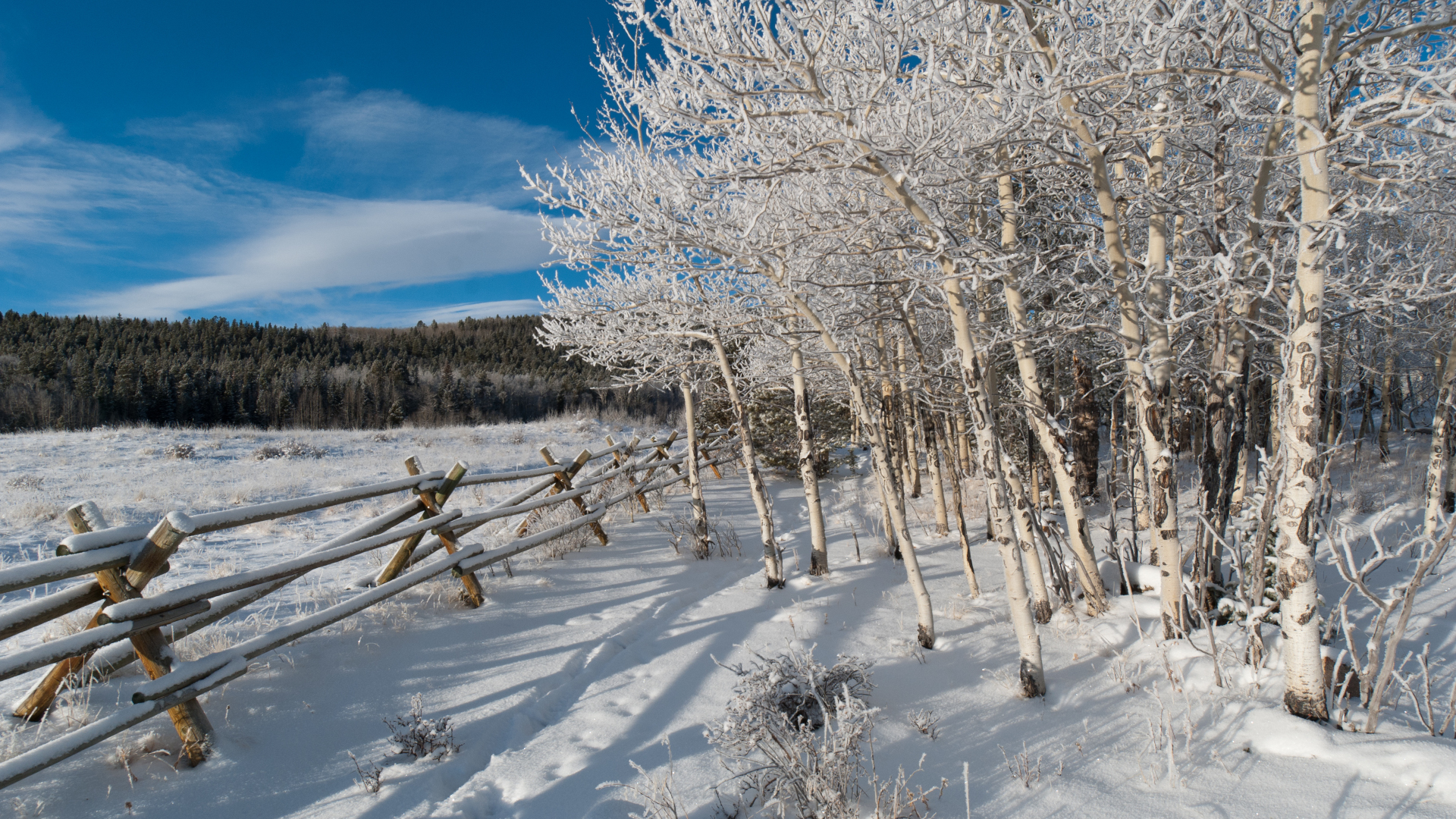
The Colorado Trail stretches from Denver to Durango and at 486 miles long would make an ambitious – though not impossible – snowshoe hike. Though the sections closer to Denver don’t often see enough snow for snowshoes, once you get further into the mountains, there are some great sections for winter wandering including Section 5, Kenosha Pass, which is at 10,000ft just north of Fairplay. Skiers and snowshoers love this section for its deep snow and stunning mountain views. The Kenosha Pass trailhead is on Hwy 285 about 60 miles south of Dencer. Park at the picnic area for a small fee and walk east for the best views. It is windy, so make sure to bring a hardshell or windproof, waterproof jacket to wear as an outer layer.
Nederland
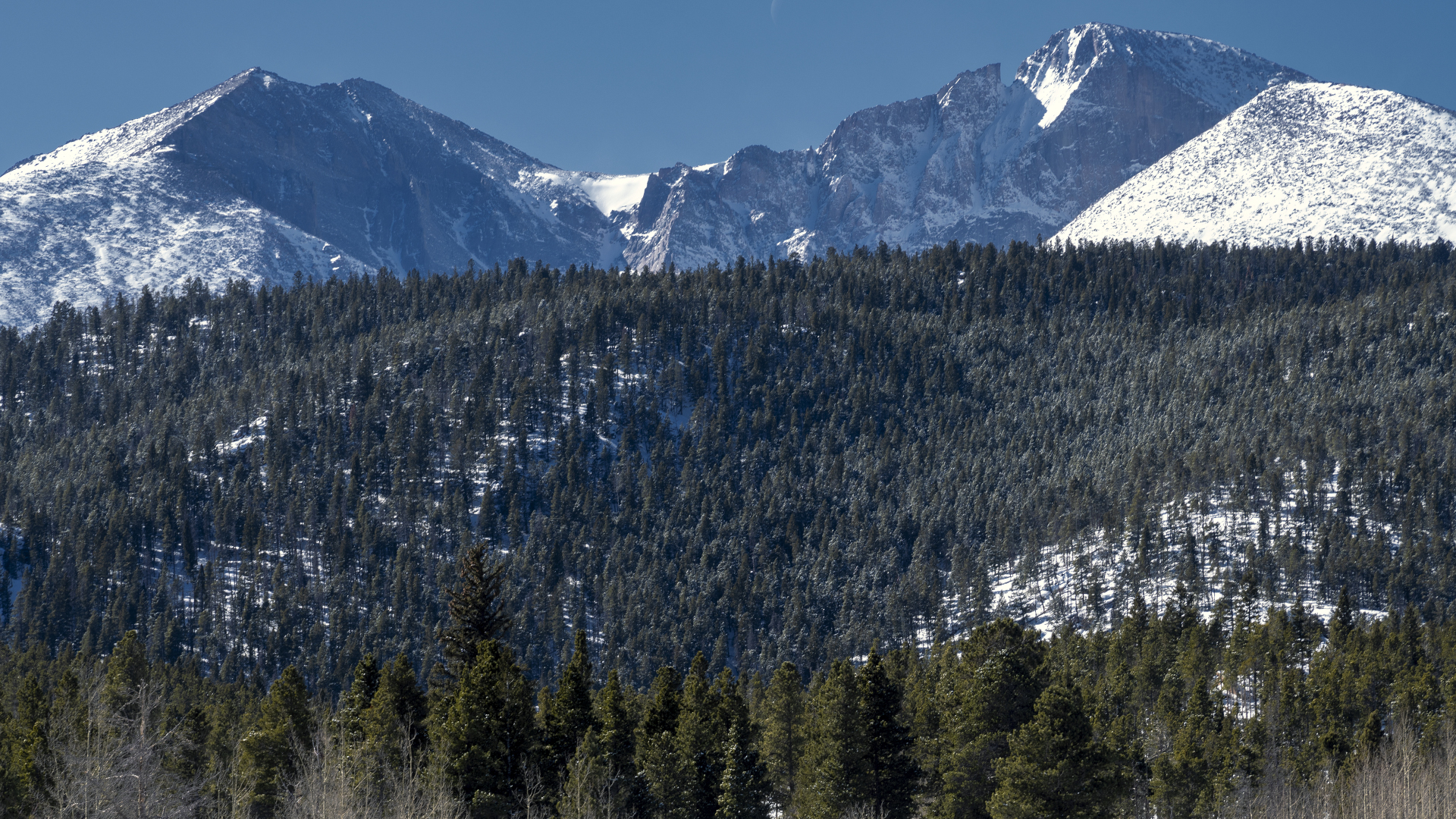
Just west of Boulder, the picturesque former mill town of Nederland is known as the gateway to the Indian Peaks Wilderness and its summer hikes transform into frosted adventures in the winter. Two of the best trails are Lost Lake, with views of Eldora ski hill and a stunning lake at the end, and Arapahoe Glacier Trail for those seeking a more strenuous climb through the woods to views of Boulder.
Vail Pass
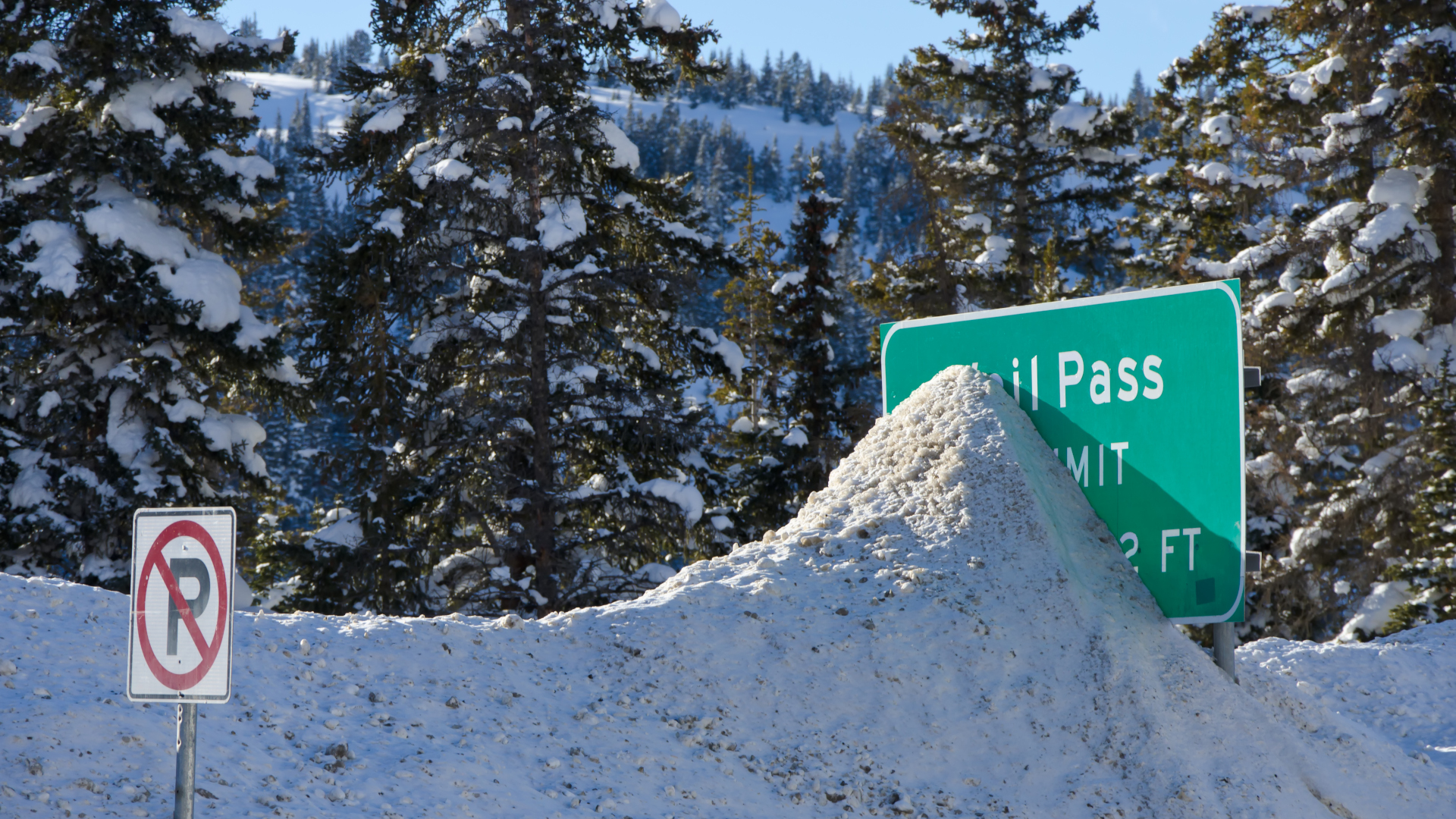
Vail Pass is the 10,666-foot-high mountain pass that you’ll drive over to get to Vail if you come from the east. At that elevation, it never runs out of deep snow come winter and there are trails travelling in all directions to explore on snowshoes, all with magnificent views of the Gore Range and surrounding valleys. Park on the south side of the highway and hike up to Shrine Ridge Trail, one of the most popular hikes in the Sawatch Range that begins at well over 11,000ft in elevation and made our list of best hikes in Vail, or park on the north side and explore the more adventurous climb up Uneva Peak.
Rabbit Ears Pass
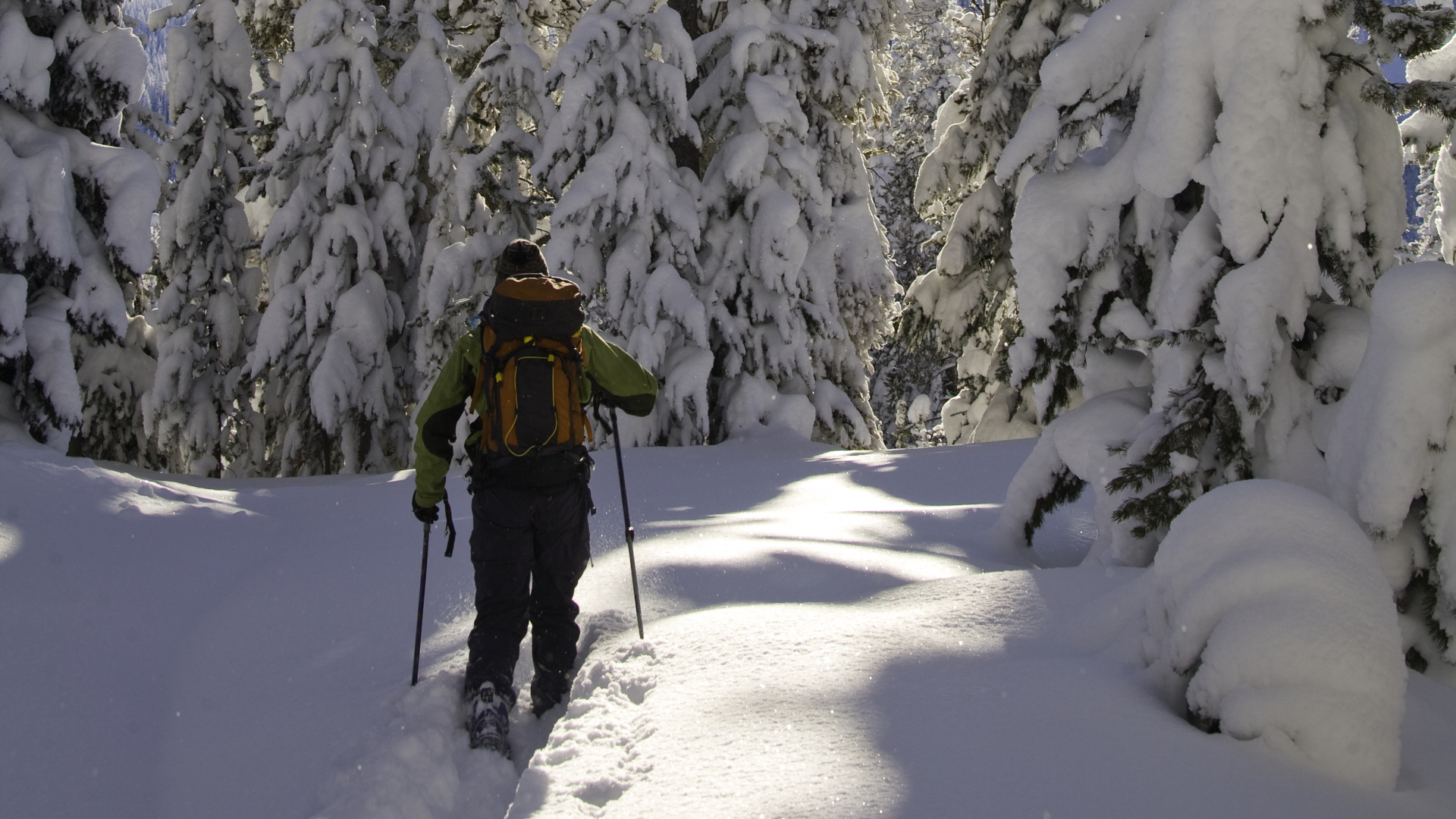
Rabbit Ears Pass is where Hwy 40 crosses the Continental Divide so you already know the views are going to be sublime. Near Steamboat Springs, this Pass offers a plethora of well-marked nordic trails that you can use for snowshoeing, and the most popular is West Summit Loop 1A, a four-mile loop with views of the Flat Top Mountains and Yampa Valley. From Steamboat Springs, travel east on 40 for 13 miles to the West Summit Trailhead. Begin on the north side of the road for gentler climbs.
Grand Mesa
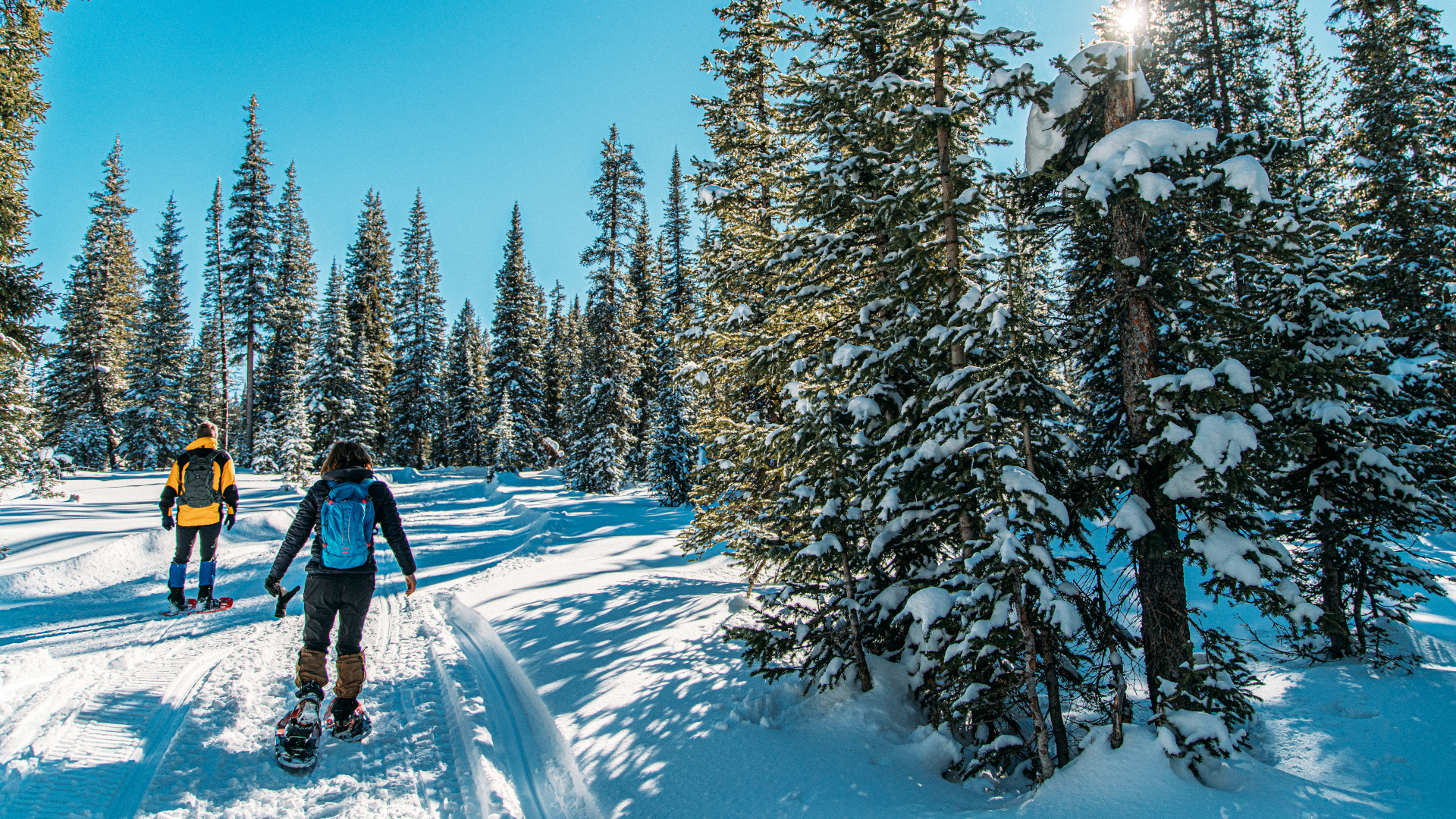
Over on the Western Slope, the Grand Mesa is the world’s largest flat-topped mountain and offers 360-degree views of western Colorado. With an area of roughly 500 square miles, Grand Mesa stretches for about 40 miles east of Grand Junction between the Colorado River and the Gunnison River. The mesa is a beautiful one hour drive from Grand Junction and while that city isn’t known for high snowfall, at 11,000ft the Mesa can be a winter wonderland while downtown is enjoying mild conditions. A network of cross country ski trails up there are maintained by the council and snowshoers are welcome to use them, however you are asked to walk in the snow alongside the groomed trails which will be more fun for you and keeps the trails in top condition for skiers.
Nordic centers snowshoeing in Colorado
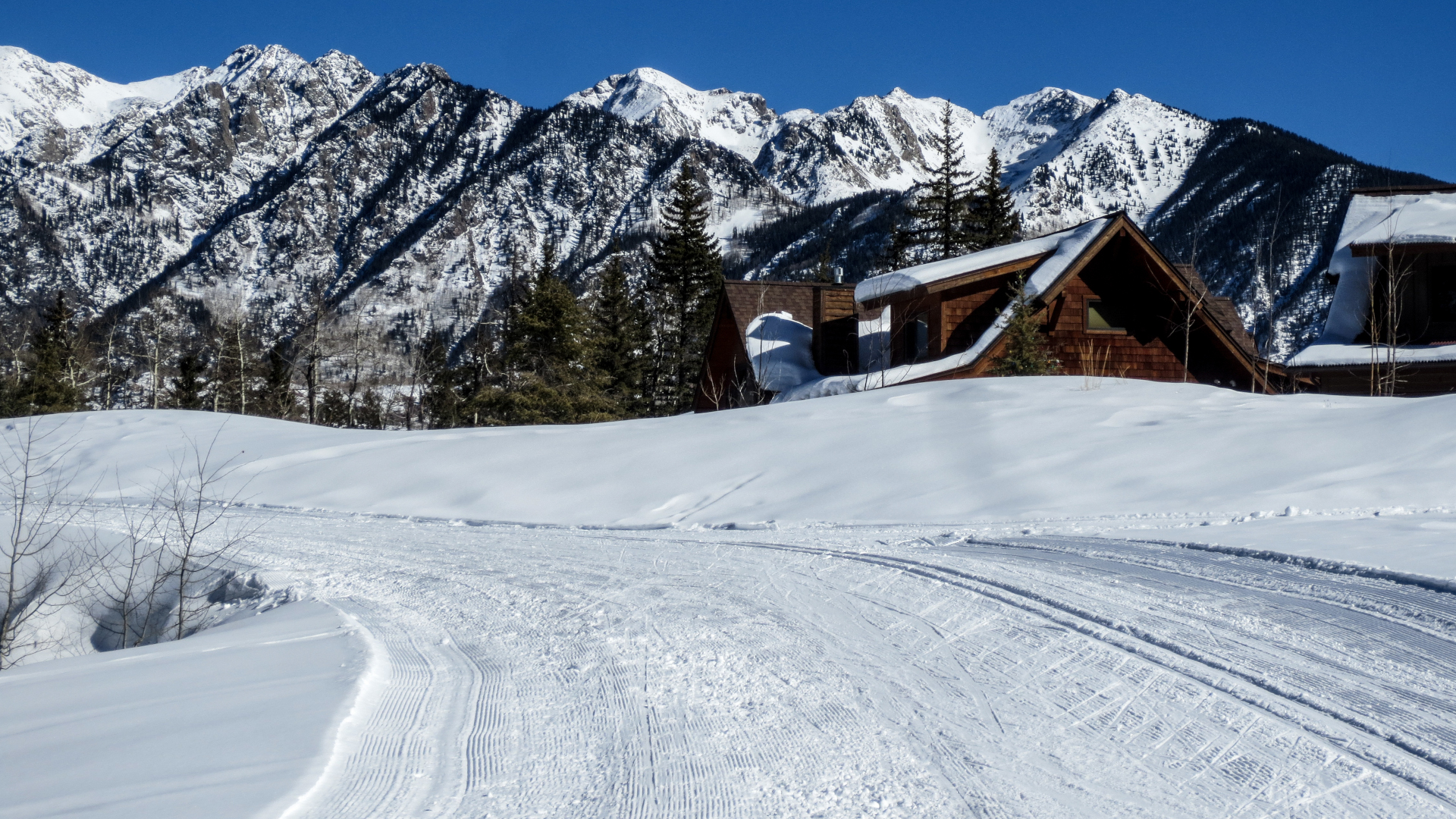
If in-bounds hiking is more your thing, or you just want access to some snowshoe rentals, well-maintained trails with premium views, guides and a nice hot chocolate at the lodge, there are also some excellent Nordic centers in Colorado that you can access for a fee.
- McCoy Park: located up on Beaver Creek ski resort just west of Vail, this lift-served trail system boasts almost 20 miles of trails with views of Vail and the Gore Range.
- Vail Nordic Center: located on the Vail Golf Course just east of Vail village, you can enjoy several miles of groomed trails here in the spectacular shadow of the hulking Gore Range just to the west.
- Breckenridge Nordic Center: just a short drive or free shuttle ride from downtown Breckenridge, this center features an impressive 2,000 acres of explorable terrain through alpine forests with spectacular views of the high country.
- Crested Butte Nordic Center: though Crested Butte is known for its steep terrain, this premier non-profit center has over 30 miles of accessible trails all with fabulous views of the West Elks.
- Tennessee Pass: located at the base of Ski Cooper, Tennessee Pass Nordic Center is nine miles from historic Leadville and offers beautiful forested trails. You can even spend the night in the yurt!
- Eldora Nordic Center: a mere 20 miles from Boulder at Eldora ski resort you can find trails that take you through old-growth forests and alpine meadows, all with dramatic mountain backdrops.
Julia Clarke is a staff writer for Advnture.com and the author of the book Restorative Yoga for Beginners. She loves to explore mountains on foot, bike, skis and belay and then recover on the the yoga mat. Julia graduated with a degree in journalism in 2004 and spent eight years working as a radio presenter in Kansas City, Vermont, Boston and New York City before discovering the joys of the Rocky Mountains. She then detoured west to Colorado and enjoyed 11 years teaching yoga in Vail before returning to her hometown of Glasgow, Scotland in 2020 to focus on family and writing.

